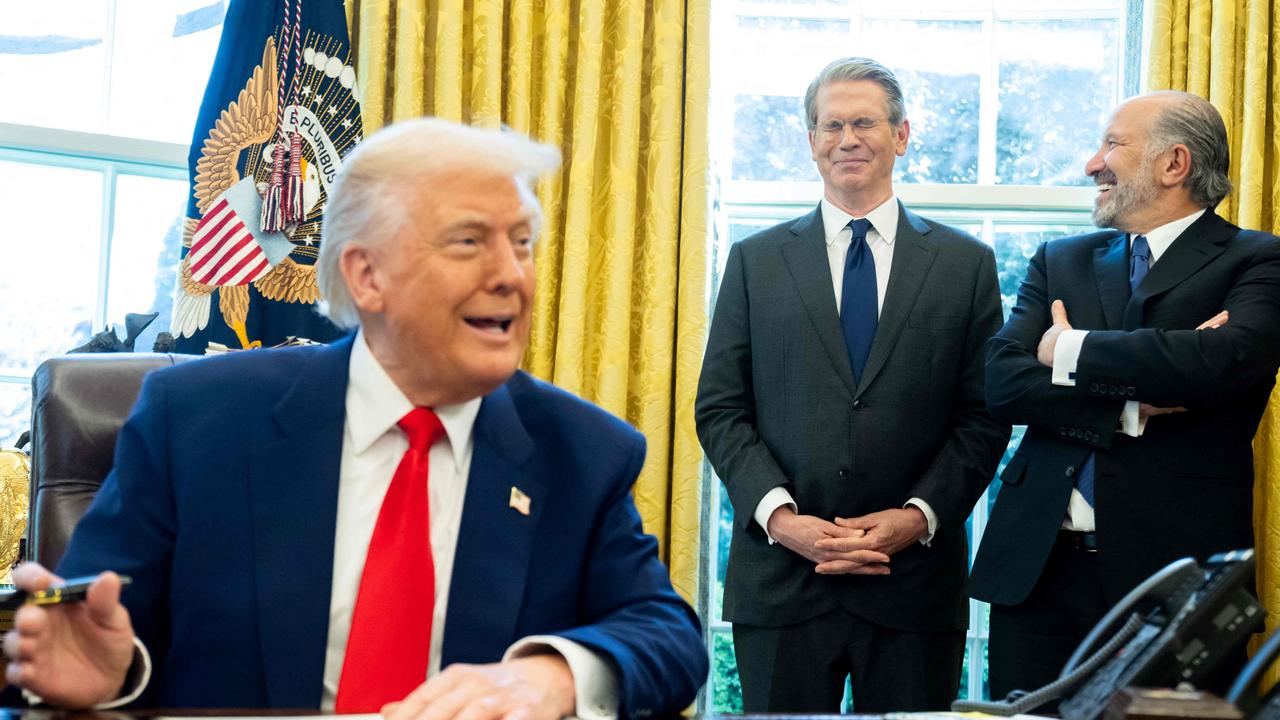Cowper crash nightmare recounted
NO reporter, and I don't care how hardened he or she was, could remain emotionally unmoved from the sights that unfolded after the collision between a coach and a semi-trailer north of Grafton 20 years ago.
Opinion
Don't miss out on the headlines from Opinion. Followed categories will be added to My News.
NO reporter, and I don't care how hardened he or she was, could remain emotionally unmoved from the sights that unfolded after the collision between a coach and a semi-trailer north of Grafton 20 years ago.
When you're the news director of a television station like NRTV in Coffs Harbour, you get used to the barrage of after-hours phone calls. They go with the territory. The call to my home before dawn on October 20, 1989, was different.
It was my cameraman, Michael O'Grady, telling me that his police scanner (a device used to intercept emergencies) had picked up reports of a serious road accident at Cowper, near Grafton.
I got dressed, kissed my sleeping wife on the forehead, and waited for Mick to carry me to yet another Pacific Highway accident. It was still dark as we made our way north. Mick talked about his game of golf the day before. We also exchanged jokes, talked about horse racing and politics.
We were on our way to just another job. Wrong. On the car's radio, reporter David Bancroft of commercial Radio 2GF in Grafton was updating the situation at Cowper. In the space of half an hour, the death toll had climbed from five to 15.
Ten minutes later, Bancroft told us the toll was 19 and rising. Mick O'Grady and I fell silent. The enormity of what we were about to visit, took hold.
When we did speak again, it was about the equipment in the back of the Maverick. Double-check camera batteries, microphone, tripod, head-sets and lights (why on earth would we need lights when the sun was about to rise?) Nerves.
After less than an hour and a half on the road, we arrived at Cowper. A police officer, seeing the NRTV livery on the Maverick, guided us past the long line of stationary traffic and to the site of what I had never seen before, and never want to see again. Never.
It is best described as organised chaos. The ambulance officer in charge of the massive task pulled us to one side as we unloaded our news gathering gear from the back of the Maverick.
I don't remember his name, but I do remember part of his briefing. "Look," the ambulance officer said. "When you start taking pictures, try to avoid the body parts … that's all I ask."
While he scampered off after receiving a call on his hand-held two-way radio, Mick and I ventured into hell. Our first encounter with visible death was the truck driver. His rig had slammed into a post-and rail-fence about 50 metres after tearing the passenger side out of the bus.
The driver's door of the prime mover was open. Emergency workers had thrown a blanket over his body and left him there . He wasn't going anywhere - there were lives to be saved down the road.
The smell of the scene itself was overpowering. The semi-trailer was carrying hundreds of cans of pineapple juice. Many of the containers had split open on impact with the coach. It was a sickly sweet smell, mixed with something else to provide a cocktail of carnage. Was it death?
I wasn't to know until years later that the second ingredient of the cocktail wasn't death - it was fear. Fear, I learnt, had a smell all of its own. I can't describe it.
The bus and the truck had collided on a section of the Pacific Highway that was just three metres wide. Truckies later told stories about how they clipped rear vision mirrors while passing each other at speed. Madness.
The coroner's report on the Cowper bush crash revealed that the semi-trailer, travelling south, had veered across the narrow roadway and had ripped open the driver's side of the north-bound coach.
Passengers right along that side didn't have a chance in hell. Bus seats sat upright in the middle of the highway. Clothes, baggage, shoes, wallets and handbags littered the roadway. It looked more like the remnants of an air crash. The dead, including youngsters, were lined up on stretchers in a paddock alongside the Clarence River.
Among them were relatives and friends of the Ormesher family. In a matter of seconds, the Ormeshers lost their two teenage children, their son's fiancée, three relatives on holiday from England and two friends from Sydney.
The Ormeshers had booked 10 seats on that bus. Eight out of the 10 occupants were killed. In a bizarre twist, the Cowper crash happened on the 26th anniversary of the Ormesher's arrival in Sydney from England.
Mr Ormesher, the father of the two dead teenagers, died of a heart attack four years after the accident.
As cameraman Mick O'Grady went about his job of gathering footage of the Cowper aftermath, I beat a retreat after seeing the bodies in the paddock.
Apart from the body parts along the roadway, the one sight that overpowered me that day. was the little feet at the end of the covered stretchers lined up in the paddock. Kids either sleeping, chatting or playing hand games to pass the time, were mutilated in seconds. Imagine that.
I told Mick I wanted to seek out emergency workers for possible TV interviews later in the morning.
That was only partly true. I had witnessed enough carnage to last me a lifetime. In those days, you could only see black and white images through the viewfinder of a TV camera. Mick O'Grady told me much later that seeing only black and white stopped him from calling it a day. Colour would have been far too much to stand.
Two hours after arriving at what was then Australia's worst road accident, and armed with three 20-minute video tapes of death, destruction and interviews, Mick and I packed up the Maverick and headed south.
But the job wasn't over. What was going on at Grafton Base Hospital, where the 22 survivors - and later the dead - were taken in seemingly endless ambulance shuttles?
I admit to being surprised at the scene inside the hospital. Calm. Matter of fact. Efficient. The acting Director of Nursing, Kay Paine, was calling the shots as stretcher trolleys sped around us.
At one stage, Kay Paine cradled a new-born baby in her arms as she assigned her nursing staff. I was to learn many years later that the baby was dead. A heavily-pregnant survivor of the Cowper crash had the child delivered by Caesarian Section. The mother lived, her baby didn't.
The bodies arrived in four ambulances. They were placed side-by-side on the floor of the hospital's morgue to await inspection by an identification team on its way from Sydney. The morgue was full. There was no room for even one more body.
About 10am that horrible day, the media arrived from Sydney. They'd landed their helicopters at the crash site to do their interviews. Included among those facing the microphones were politicians.
They huffed and puffed and promised a four-lane, divided highway between Hexham in the south and Tweed Heads to the north. That was 17 years ago. There is still no divided Pacific Highway
The hospital's Chief Executive Officer, Harold Keane, was in charge of directing the media. He had his hands full. The Sydney crews would later be described as disruptive and arrogant. Some even posed as visitors to line-up interviews with sobbing survivors.
But they got their stories. My story that night on NRTV News included two pre-arranged and allowed interviews with survivors. But after the story went to air, the telephone switch girl at NRTV was bombarded.
How dare I talk to those people after what they'd been through. I was heartless, I was a ghoul and I was a disgrace to my profession. It was hard to defend myself. Wasn't I just doing my job and reporting on what had happened.?
I honestly believed it would help those survivors to talk about what had happened. To get it out. No, that was described as trickery and devious.
The events of that day, and the response from some viewers that night, will remain etched in my memory until I meet my maker.
I went home after the news, found a space away from the wife and kids, and cried.. I'm a journalist. Gee I'm tough.
No counselling was offered to reporters or camera operators in those days. Indeed, counselling for emergency workers who went through hell on that day at Cowper, was of no use to some.
There are ambulance people who still have nightmares to this day. One police officer took his own life. Such was the scale of the crash, that some emergency workers refuse to discuss it.
Two months later, with Christmas just around the corner, I drove my family to relatives in Sydney for the holiday season. But our car was diverted by a roadblock a few kilometres north of Kempsey.
Heading for South West Rocks to bypass Kempsey, I reached for the radio. Two buses had collided head-on at Clybucca. By the time we reached Sydney it was confirmed that 35 people had died.
Bodies were found under piles of Christmas presents destined for relatives north and south.
In the space of just two months, 56 people were dead.
Again the politicians shook their heads in disbelief. They again promised the divided highway and, this time, even seatbelts on touring coaches. I didn't see any seatbelts last time I was on a bus, and the Pacific Highway, in parts, remains a goat track claiming a growing list of lives. Death on that road is inevitable.
An NRMA report has predicted that 800 people will be killed on the Pacific Highway in the next 15 years. That's enough to make anyone cry.
Originally published as Cowper crash nightmare recounted


